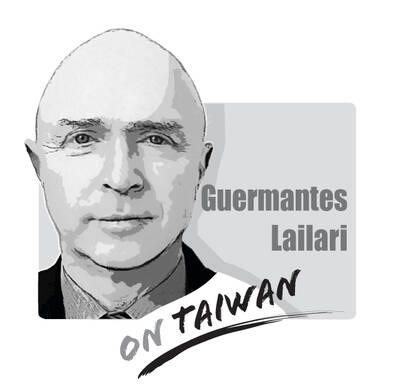Opposing Taiwanese independence is a front for opposing Taiwanese freedom of choice. The whole world knows this -- except for KMT Chairman Lien Chan and his followers, as their reaction to the "Anti-Secession" Law showed. The pan-blue camp said the law targeted Taiwanese independence supporters, and therefore refused to participate in the protest on March 26, which, like Lien's trip, confused KMT followers and the world.
Peace without dignity or freedom is what the pan-blue camp protested for at CKS International Airport. But Lien and his supporters will never speak the truth about how they intend to bring about this "peace."
If "peace" is all the KMT wants, then former president Chiang Kai-shek (蔣介石) could have secured it decades ago. But Lien is trying to say that today's Chinese Communist Party is different to before.
The world knows, however, that the only difference in the communists today is that they are richer and stronger.
The number of people who protested the trip at the airport compared with those who supported it, according to police reports, was about 3,000 to 900, roughly the same ratio of those think the trip will sell out Taiwan against those who would want "peace" at the expense of freedom and democracy.
The most objectionable thing about the airport scuffle was the presence of organized-crime gangs, like at every other pan-blue gathering, and their attacks on pan-green camp members, and Taiwanese independence supporters in particular. These thugs have not been punished, and were not even challenged by the authorities or the police on the scene. Watching these cowards gang up on the elderly and beat isolated pan-green camp supporters was sickening.
Unless Lien states clearly that he supports freedom of choice for Taiwanese people, he will go down in history as selling out Taiwan, selling out freedom, selling out democracy as well as selling out the hope of Chinese who yearn for democracy and freedom.
Chen Ming-chung
Chicago, Illinois

Chinese state-owned companies COSCO Shipping Corporation and China Merchants have a 30 percent stake in Kaohsiung Port’s Kao Ming Container Terminal (Terminal No. 6) and COSCO leases Berths 65 and 66. It is extremely dangerous to allow Chinese companies or state-owned companies to operate critical infrastructure. Deterrence theorists are familiar with the concepts of deterrence “by punishment” and “by denial.” Deterrence by punishment threatens an aggressor with prohibitive costs (like retaliation or sanctions) that outweigh the benefits of their action, while deterrence by denial aims to make an attack so difficult that it becomes pointless. Elbridge Colby, currently serving as the Under
The Ministry of the Interior on Thursday last week said it ordered Internet service providers to block access to Chinese social media platform Xiaohongshu (小紅書, also known as RedNote in English) for a year, citing security risks and more than 1,700 alleged fraud cases on the platform since last year. The order took effect immediately, abruptly affecting more than 3 million users in Taiwan, and sparked discussions among politicians, online influencers and the public. The platform is often described as China’s version of Instagram or Pinterest, combining visual social media with e-commerce, and its users are predominantly young urban women,
Most Hong Kongers ignored the elections for its Legislative Council (LegCo) in 2021 and did so once again on Sunday. Unlike in 2021, moderate democrats who pledged their allegiance to Beijing were absent from the ballots this year. The electoral system overhaul is apparent revenge by Beijing for the democracy movement. On Sunday, the Hong Kong “patriots-only” election of the LegCo had a record-low turnout in the five geographical constituencies, with only 1.3 million people casting their ballots on the only seats that most Hong Kongers are eligible to vote for. Blank and invalid votes were up 50 percent from the previous
Japanese Prime Minister Sanae Takaichi lit a fuse the moment she declared that trouble for Taiwan means trouble for Japan. Beijing roared, Tokyo braced and like a plot twist nobody expected that early in the story, US President Donald Trump suddenly picked up the phone to talk to her. For a man who normally prefers to keep Asia guessing, the move itself was striking. What followed was even more intriguing. No one outside the room knows the exact phrasing, the tone or the diplomatic eyebrow raises exchanged, but the broad takeaway circulating among people familiar with the call was this: Trump did